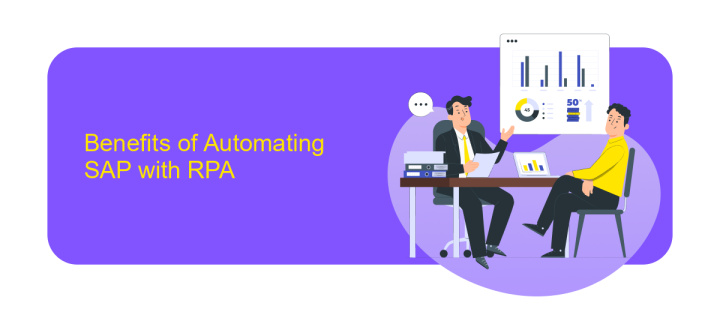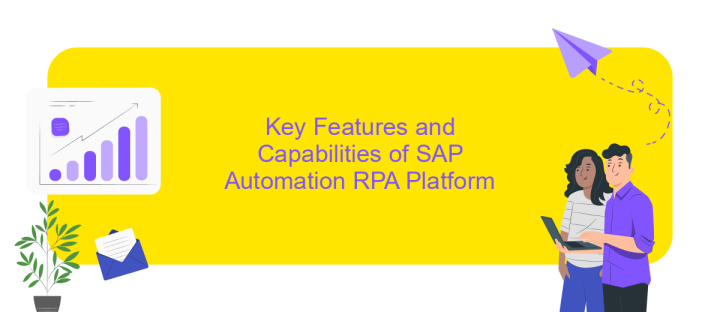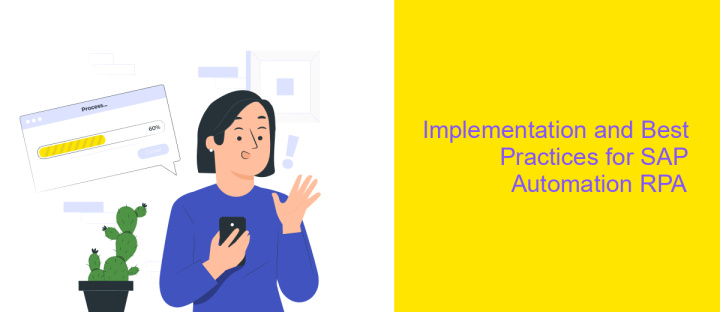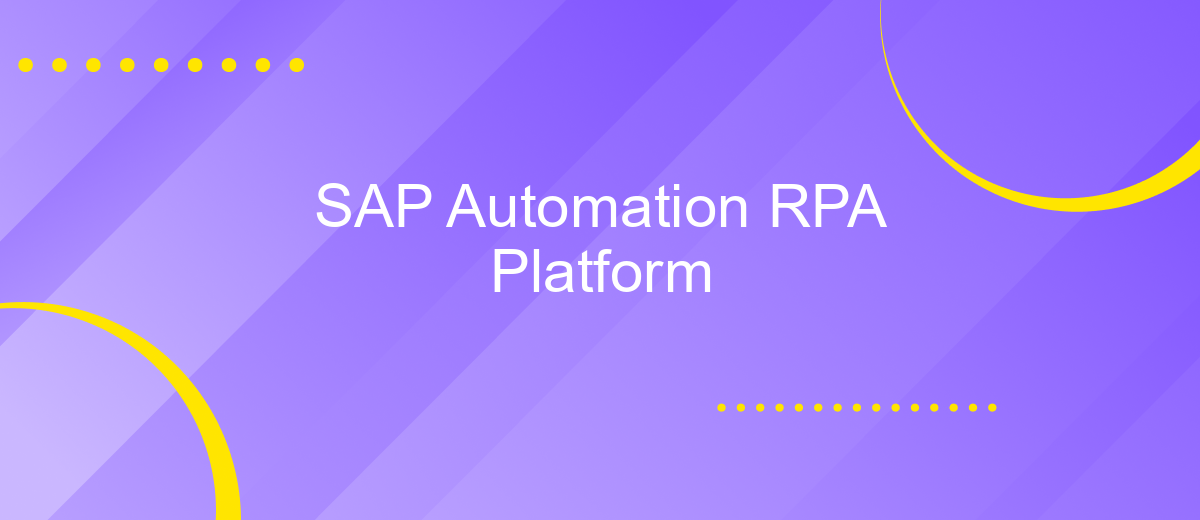SAP Automation RPA Platform
In today's fast-paced digital landscape, businesses are increasingly turning to automation to enhance efficiency and reduce operational costs. The SAP Automation RPA Platform emerges as a powerful tool, enabling organizations to streamline processes and improve accuracy by automating repetitive tasks. By leveraging cutting-edge robotic process automation (RPA) technology, this platform empowers businesses to focus on strategic growth while ensuring seamless integration with existing SAP systems.
Introduction to SAP Automation RPA Platform
SAP Automation RPA Platform is revolutionizing the way businesses manage their processes by integrating Robotic Process Automation (RPA) with SAP systems. This innovative platform enables organizations to streamline operations, reduce manual workload, and enhance overall efficiency. By automating repetitive tasks, businesses can focus on strategic initiatives and drive growth.
- Seamless integration with existing SAP systems
- Reduction of manual errors and increased accuracy
- Enhanced productivity and operational efficiency
- Scalability to accommodate growing business needs
- Cost-effective solution for process optimization
By leveraging the SAP Automation RPA Platform, companies can unlock new levels of productivity and innovation. The platform empowers businesses to automate complex workflows, ensuring that resources are utilized efficiently and effectively. As a result, organizations can achieve greater agility and responsiveness in a competitive market, paving the way for sustainable success and long-term growth.
Benefits of Automating SAP with RPA

Implementing RPA (Robotic Process Automation) in SAP systems offers numerous advantages, enhancing efficiency and accuracy across various business processes. By automating repetitive tasks, companies can significantly reduce manual errors, leading to improved data integrity and consistency. This automation not only accelerates transaction processing but also allows employees to focus on more strategic activities, driving overall productivity and innovation within the organization.
Moreover, integrating RPA with SAP systems can be seamlessly managed using platforms like ApiX-Drive, which simplifies the configuration of integrations. ApiX-Drive enables businesses to connect SAP with other applications effortlessly, ensuring smooth data flow and real-time updates. This integration capability enhances decision-making processes by providing timely and accurate information. Additionally, the scalability of RPA solutions ensures that as business needs evolve, the automation framework can adapt, offering sustained operational benefits and a competitive edge in the market.
Key Features and Capabilities of SAP Automation RPA Platform

SAP Automation RPA Platform revolutionizes business processes by automating repetitive tasks and enhancing operational efficiency. This platform seamlessly integrates with existing SAP systems, ensuring a smooth transition from manual operations to automated workflows. By leveraging advanced robotic process automation (RPA) technologies, organizations can reduce errors, increase productivity, and focus on strategic initiatives.
- Seamless Integration: Easily connects with SAP and non-SAP systems, enabling end-to-end process automation without disrupting existing infrastructure.
- Scalability: Supports the automation of processes at any scale, from small departmental tasks to enterprise-wide operations.
- Intelligent Bots: Utilizes AI-driven bots capable of learning and adapting to new tasks, enhancing decision-making and process optimization.
- Security and Compliance: Ensures data protection and compliance with industry standards, safeguarding sensitive business information.
- User-Friendly Interface: Offers an intuitive design that allows users of all technical levels to create and manage automation workflows effortlessly.
The SAP Automation RPA Platform empowers businesses to innovate by freeing up valuable resources and enabling a focus on core business objectives. By adopting this platform, companies can achieve greater agility and responsiveness in today’s fast-paced digital landscape.
Implementation and Best Practices for SAP Automation RPA

Implementing SAP Automation RPA involves several critical steps to ensure success. Initially, it's essential to conduct a thorough assessment of existing processes to identify automation opportunities. This assessment helps in understanding the workflow intricacies and determining the areas where RPA can deliver maximum efficiency and cost savings.
Once potential automation areas are identified, the next step is to design and develop the RPA bots. This phase requires collaboration between IT and business units to ensure that the bots align with business objectives and technical requirements. Testing is crucial to verify that the bots function as intended without disrupting existing systems.
- Conduct a detailed process analysis to identify automation opportunities.
- Collaborate with stakeholders to align RPA goals with business objectives.
- Develop and test RPA bots rigorously to ensure seamless integration.
- Monitor and maintain bots regularly to adapt to changing processes.
Best practices for SAP Automation RPA include continuous monitoring and optimization. Regularly reviewing bot performance helps in identifying improvement areas and adapting to process changes. Additionally, fostering a culture of innovation and collaboration can drive further automation opportunities, enhancing overall organizational efficiency.
- Automate the work of an online store or landing
- Empower through integration
- Don't spend money on programmers and integrators
- Save time by automating routine tasks
Case Studies and Success Stories with SAP Automation RPA
One notable case study involves a global manufacturing company that leveraged SAP Automation RPA to streamline its supply chain processes. By automating repetitive tasks such as order processing and inventory management, the company significantly reduced operational costs and improved accuracy. The implementation of SAP Automation RPA led to a 30% increase in productivity within the first six months. Additionally, the integration with existing systems was seamless, allowing the company to maintain continuity while enhancing efficiency.
Another success story comes from a leading financial services provider that adopted SAP Automation RPA to enhance customer service operations. By automating routine inquiries and data entry tasks, the company improved response times and customer satisfaction. The integration of ApiX-Drive played a crucial role in this transformation, offering a robust solution for connecting various applications and automating workflows. As a result, the company reported a 25% reduction in processing time and a significant boost in client engagement. These examples illustrate the transformative potential of SAP Automation RPA across different industries.
FAQ
What is SAP Automation RPA Platform?
How does SAP RPA integrate with existing systems?
What are the benefits of using SAP RPA for businesses?
How can businesses get started with SAP RPA?
What industries can benefit most from SAP RPA?
Routine tasks take a lot of time from employees? Do they burn out, do not have enough working day for the main duties and important things? Do you understand that the only way out of this situation in modern realities is automation? Try Apix-Drive for free and make sure that the online connector in 5 minutes of setting up integration will remove a significant part of the routine from your life and free up time for you and your employees.


